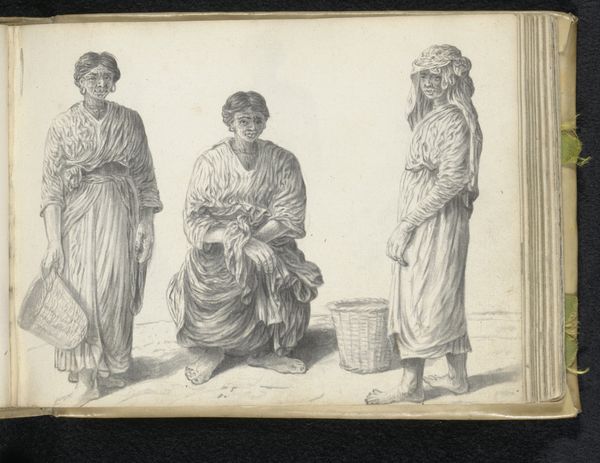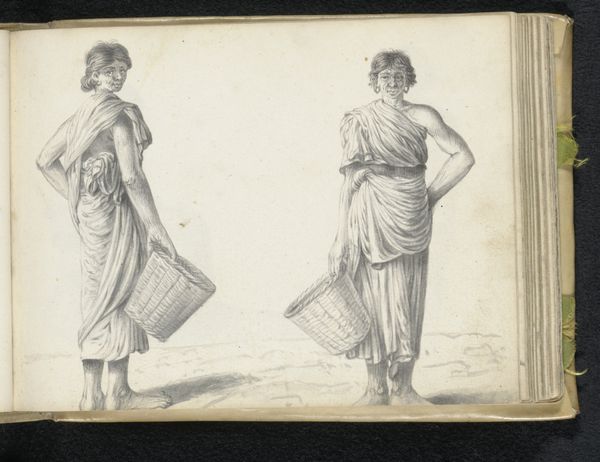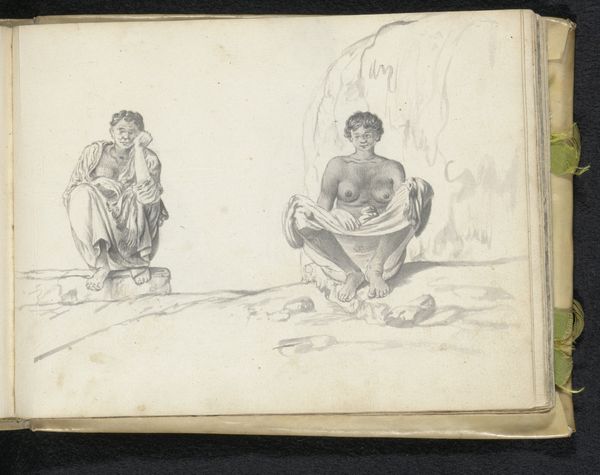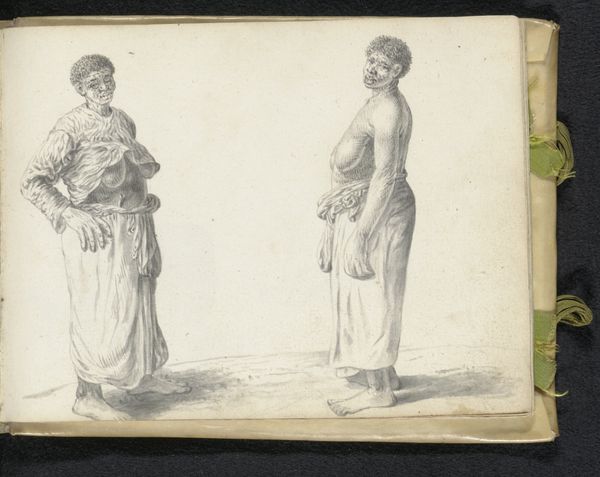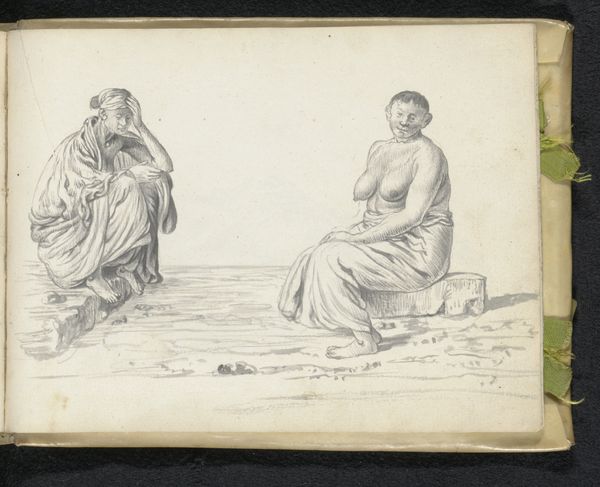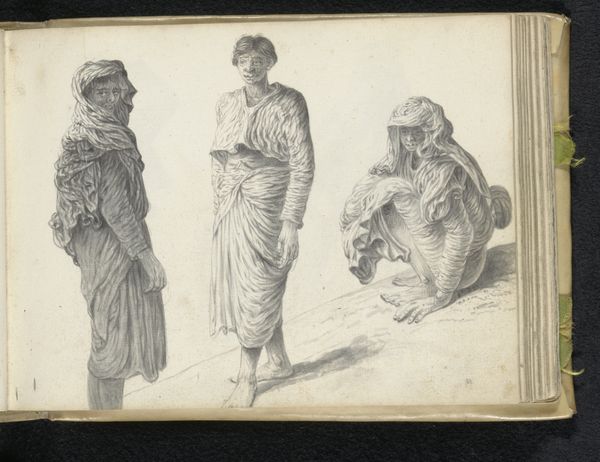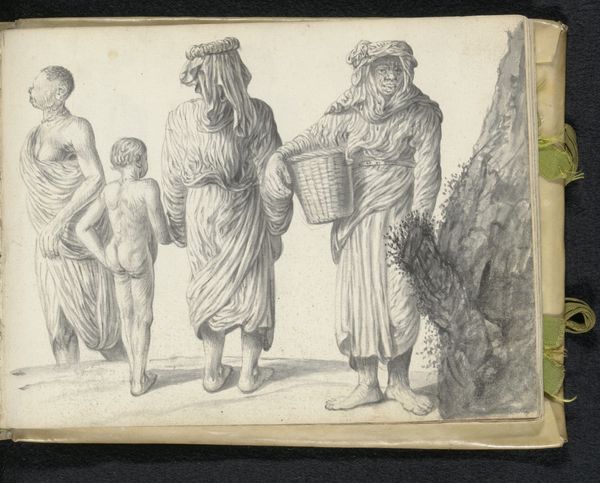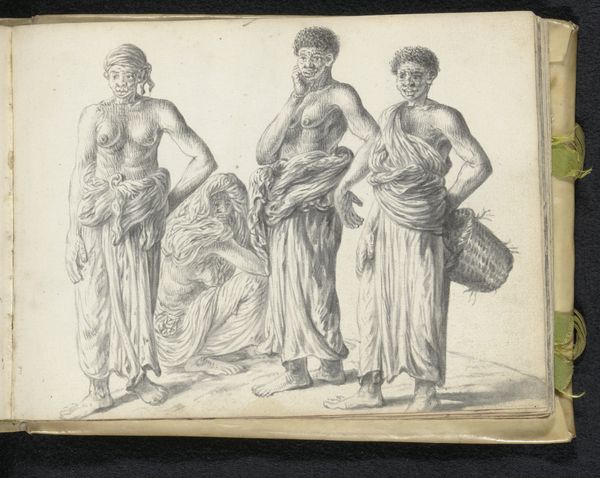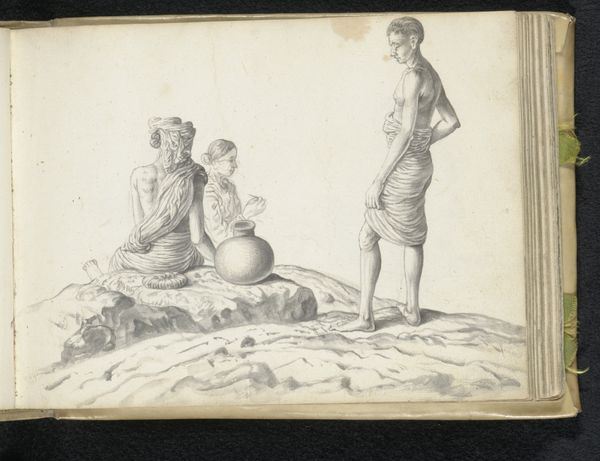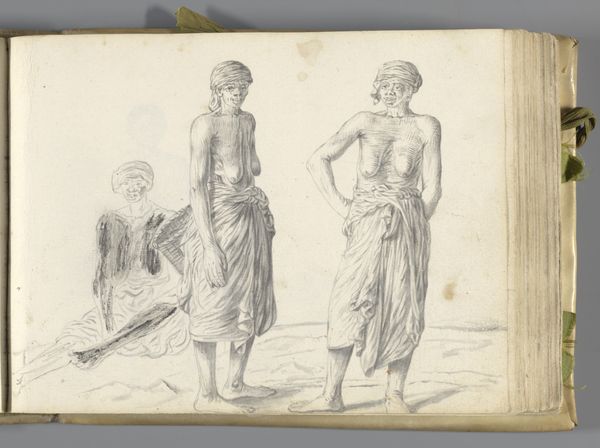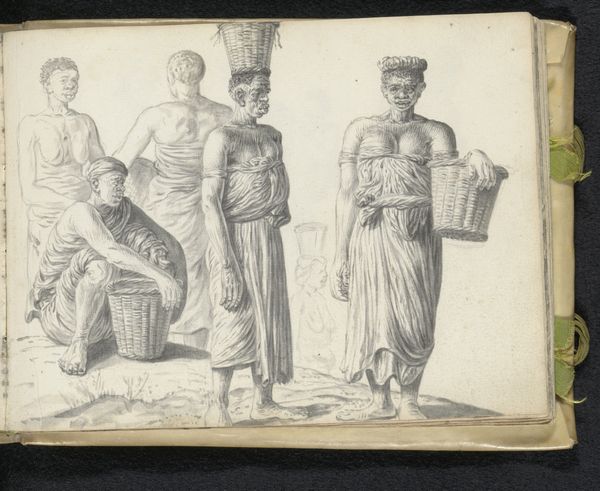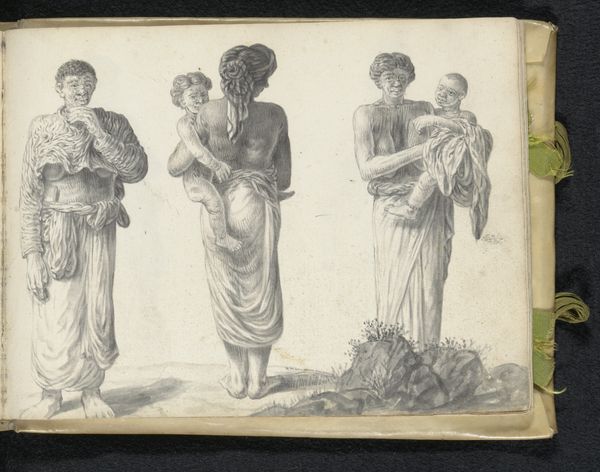
drawing, pencil
#
portrait
#
drawing
#
dutch-golden-age
#
pencil sketch
#
coloured pencil
#
pencil
#
genre-painting
Dimensions: height 148 mm, width 196 mm
Copyright: Rijks Museum: Open Domain
Editor: Here we have "Three Women Labourers," a pencil drawing with colored pencil made in 1662 by Esaias Boursse. It seems almost ethnographic, depicting three working women, yet the poses feel quite formal. What social narratives do you see reflected in this piece? Curator: It's tempting to see it as simply observational, but let's think about the context. Boursse was working during the Dutch Golden Age, a time of immense wealth built on global trade and, let's not forget, colonial exploitation. Does knowing that shift your perception? Editor: It does. I was initially focused on the individual portraits, the details in their faces. But considering that context, I wonder about the power dynamics at play, the way the artist is choosing to depict these women and their labour. Curator: Exactly! Who is the intended audience, and what assumptions are being made about them? Notice their bare chests. Is this "realism," or is it conforming to European ideas about the "exotic" or "primitive"? And think about the term "laborers" itself; does that adequately describe their position in society, or does it flatten their experiences? Editor: It definitely simplifies it. It also raises questions about the role of women in the Dutch colonies. Were they seen and portrayed merely as labour force? It feels very problematic to reduce a person to their occupation. Curator: Precisely. Boursse's drawing, while seemingly innocuous, becomes a document reflecting the complex intersections of class, gender, and race within a colonial framework. It asks us to consider the gaze of the artist and the systems that shape that gaze. Editor: I see what you mean. It's not just a picture of three women, but a window into a specific time, place, and power structure. It has certainly made me reconsider how seemingly simple drawings can hold much deeper historical and societal messages. Curator: Absolutely, and hopefully, it will inspire others to consider art through a more intersectional lens as well.
Comments
No comments
Be the first to comment and join the conversation on the ultimate creative platform.
